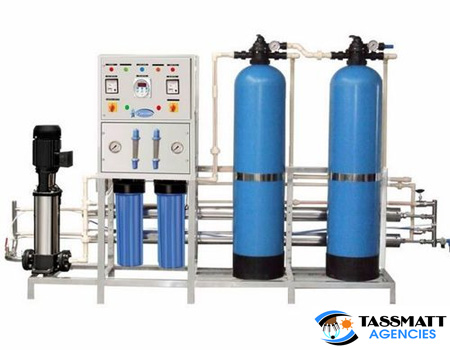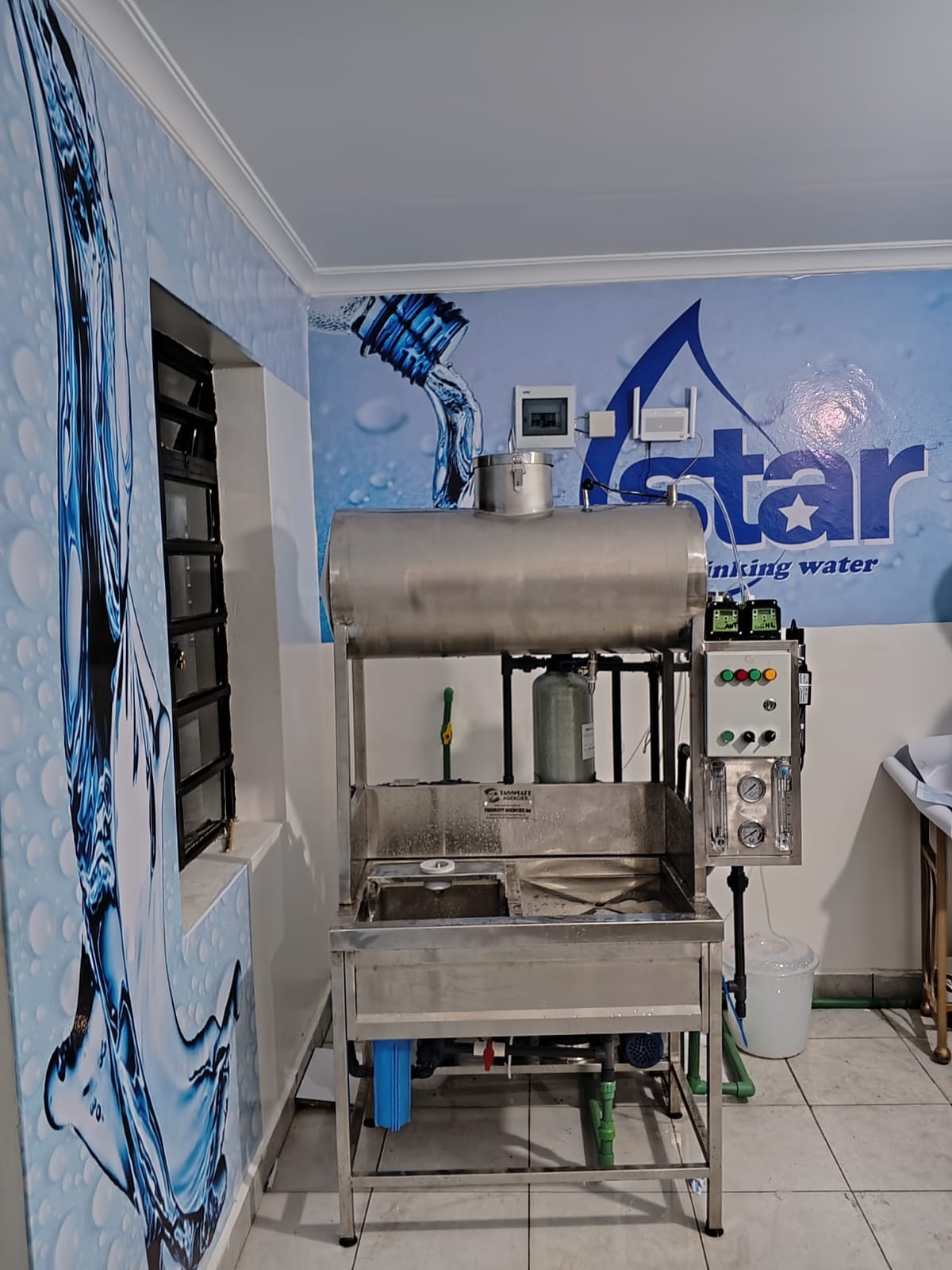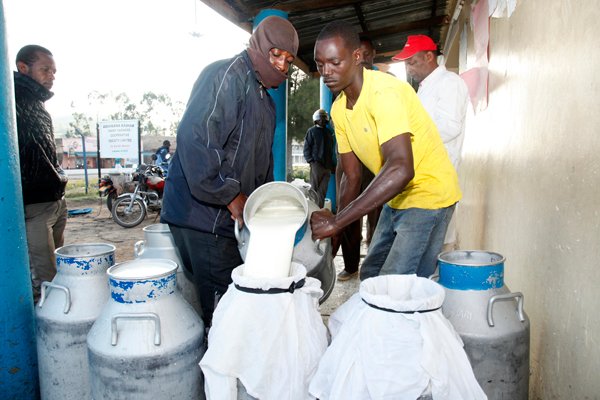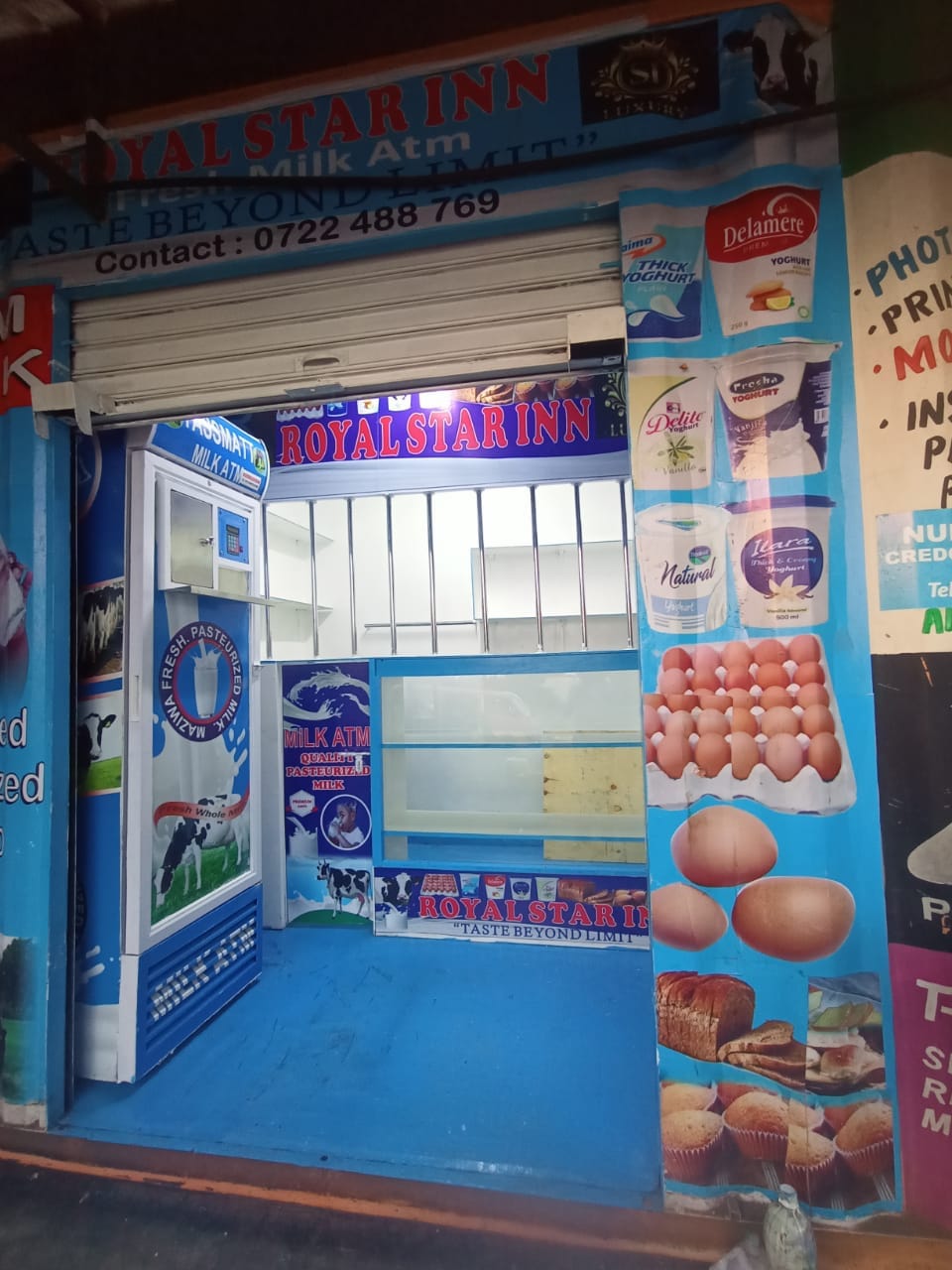In response to the Kenyan government’s directive to ensure clean and safe drinking water in educational institutions, Kyandis Bright School in Kathiani, Machakos County, has taken a significant step forward. The school has recently acquired and commissioned a state-of-the-art 1000 liters per hour Reverse Osmosis (RO) water purification machine, expertly installed by Tassmatt Agencies Limited, the authorized sellers and installers of water purification systems. This transformative initiative is set to have far-reaching benefits for the school and the local community.
In a bid to ensure that all students have access to clean and safe drinking water, the Kenya government has issued a directive for all schools to buy and install water purification machines. Kyandis Bright School in Kathiani, Machakos County has taken the lead in implementing this directive by installing a 1000LPH RO water purification machine. The machine was installed and commissioned by Tassmatt Agencies Limited, who are the authorised sellers and installers of water purification systems in Kenya.
The 1000LPH RO water purification machine is a state-of-the-art machine that uses reverse osmosis technology to remove impurities from water. Reverse osmosis is a water filtration process that uses a semipermeable membrane to remove dissolved ions, molecules, and larger particles from water. The process forces water through a semipermeable membrane, which allows water molecules to pass through but not dissolved solids.
The 1000LPH RO water purification machine installed at Kyandis Bright School is capable of producing 1000 liters of clean and safe drinking water per hour. This is enough to meet the needs of the entire school population, which is over 1000 students.
The installation of the 1000LPH RO water purification machine at Kyandis Bright School is a significant step towards ensuring that all students have access to clean and safe drinking water. This is especially important in Kenya, where waterborne diseases are a major public health problem.
The Kenya government’s directive for all schools to buy and install water purification machines is a commendable one. It will help to ensure that all students have access to clean and safe drinking water, which is essential for their health and well-being.
How the government directive will help schools with clean safe water
The government directive for all schools to buy and install water purification machines will help schools with clean safe water in the following ways:
- It will help to reduce the incidence of waterborne diseases among students. Waterborne diseases are caused by drinking water that is contaminated with harmful bacteria, viruses, and parasites. These diseases can cause a variety of health problems, including diarrhea, vomiting, cramps, and fever. In severe cases, waterborne diseases can be fatal.
- It will help to improve the overall health and well-being of students. Clean and safe drinking water is essential for maintaining good health. It helps to keep the body hydrated, which is important for all bodily functions. Clean and safe drinking water also helps to prevent the spread of diseases.
- It will help to create a more conducive learning environment. When students have access to clean and safe drinking water, they are more likely to be healthy and attentive in class. This can lead to improved academic performance.
The Benefits of Water Purification in Schools in Kenya
The benefits of water purification in schools in Kenya are numerous and far-reaching. Clean and safe drinking water is essential for the health and well-being of students, and it can also have a positive impact on their academic performance.
Reduced incidence of waterborne diseases
Waterborne diseases are a major public health problem in Kenya. According to the World Health Organization, an estimated 50 million Kenyans lack access to clean and safe drinking water. This lack of access to clean water contributes to the spread of waterborne diseases such as diarrhea, typhoid, cholera, and dysentery.
Water purification machines can help to reduce the incidence of waterborne diseases in schools by removing harmful bacteria, viruses, and parasites from the water. This can lead to a significant improvement in the health of students and their families.
Improved overall health and well-being
Clean and safe drinking water is essential for maintaining good health. It helps to keep the body hydrated, which is important for all bodily functions. Clean and safe drinking water also helps to flush out toxins from the body and prevent the spread of diseases.
When students have access to clean and safe drinking water, they are more likely to be healthy and have fewer sick days. This can lead to improved academic performance and overall well-being.
Improved learning environment
When students are healthy and well-hydrated, they are more likely to be able to focus and learn effectively in class. This can lead to improved academic performance and a more positive learning experience.
Economic benefits
Water purification machines can also provide economic benefits for schools. By reducing the incidence of waterborne diseases, water purification machines can help to reduce the cost of medical care for students and their families. Water purification machines can also help to improve the productivity of teachers and staff, which can lead to improved academic outcomes for students.

Question and Answer Session between Tassmatt Team and Kyandis Bright School Principal
Tassmatt Team: Mr. Principal, how did you find Tassmatt Agencies Limited?
Kyandis Bright School Principal: We found Tassmatt Agencies Limited through your website, www.tassmatt.com. We were looking for a reputable supplier of water purification machines, and your website was very informative and easy to navigate.
Tassmatt Team: Thank you for your kind words. We are glad that our website was helpful. Why did you need to install a water purification machine in your school?
Kyandis Bright School Principal: We needed to install a water purification machine in our school to ensure that our students have access to clean and safe drinking water. Waterborne diseases are a major public health problem in Kenya, and we want to do everything we can to protect our students from these diseases.
Tassmatt Team: We understand. Clean and safe drinking water is essential for the health and well-being of students. Why did you choose to purchase a water purification machine from Tassmatt Agencies Limited?
Kyandis Bright School Principal: We chose to purchase a water purification machine from Tassmatt Agencies Limited for several reasons. First, we were impressed with your company’s reputation and experience. Second, we were happy with the competitive prices that you offer. Third, we were confident in the quality of your products and services.
Tassmatt Team: We appreciate you choosing Tassmatt Agencies Limited. We are committed to providing our customers with high-quality products and services. We hope that you are happy with your new water purification machine.
Tassmatt Team: What has been the impact of the water purification machine on your school community?
Kyandis Bright School Principal: The water purification machine has had a very positive impact on our school community. Our students now have access to clean and safe drinking water at all times. This has led to a decrease in the incidence of waterborne diseases among our students. Additionally, our students are more focused and attentive in class when they are hydrated. This has led to an improvement in academic performance.
Tassmatt Team: What advice would you give to other schools that are considering installing a water purification machine?
Kyandis Bright School Principal: I would advise other schools to do their research and choose a reputable supplier of water purification machines. It is also important to consider the needs of your school community when choosing a water purification machine. For example, you will need to choose a machine that is the right size for your school and that can produce enough clean water to meet the needs of your students and staff.
Tassmatt Team: Thank you for your advice.
Kyandis Bright School Principal: You’re welcome.
Tassmatt Team: Is there anything else you would like to add?
Kyandis Bright School Principal: I would just like to reiterate the importance of having access to clean and safe drinking water in schools. Clean water is essential for the health and well-being of students, and it can also have a positive impact on their academic performance. I encourage all schools to consider installing a water purification machine to ensure that their students have access to clean and safe drinking water at all times.
Tassmatt Team: We are glad to hear that the water purification machine has had a positive impact on your school community.
Tassmatt Team: What are your plans for the future of Kyandis Bright School?
Kyandis Bright School Principal: We have many plans for the future of Kyandis Bright School. We are committed to providing our students with a high-quality education and preparing them for success in the 21st century. We are also committed to creating a safe and supportive learning environment for our students.
Tassmatt Team: We are glad to hear that you have such ambitious plans for the future of your school. We are confident that Kyandis Bright School will continue to be a leader in education in Kenya.
Kyandis Bright School Principal: Thank you for your confidence. We are committed to working hard to make our plans a reality.
Tassmatt Team: Is there anything else we can do to support Kyandis Bright School in achieving its goals?
Kyandis Bright School Principal: We are always looking for ways to improve our school. We are open to suggestions and ideas on how to better serve our students and community.
Tassmatt Team: Thank you for letting us know. We will keep that in mind and reach out to you if we have any suggestions or ideas.
Kyandis Bright School Principal: Thank you for your time and support.
Technological Process Of 1000LPH Water Purification Systems Installed At The School
This flow chart represents the sequential steps in a water treatment or purification system, with each process leading to the next until the water is fully treated and ready for use. The processes are as follows:

- Activated Carbon Filtration: This is the initial step in removing impurities and contaminants from the water. Activated carbon is used to adsorb organic compounds and some chemicals.
- Ion Exchange: This process involves the exchange of ions to remove minerals and ions that may be harmful or unwanted in the water.
- Flush and Micro Filtration: This step further filters the water by removing smaller particles and impurities through a microfiltration process.
- Antiscalant Dosing: Antiscalant chemicals are added to prevent the formation of scale or deposits in the reverse osmosis system.
- Reverse Osmosis: Reverse osmosis is a critical process in which water is forced through a semipermeable membrane to remove a wide range of impurities, producing high-quality purified water.
- UV Sterilization System: The final step involves exposing the water to ultraviolet (UV) light to kill or inactivate any remaining microorganisms, ensuring the water is safe for use.
This process flow chart illustrates a typical water treatment or purification system, which is used in various applications, such as providing clean drinking water or for industrial processes.
| Description Of The 1000LPH RO Machine | |||||
| 1. | Product name: | Reverse osmosis water purification system | 7. | Brand: | TS01 00- 1000/23 |
| 2. | Model: | TS-RO1000L | 8. | Capacity: | 1,000LPH Control |
| 3. | Type: | Automation | 9. | Power: | 3.0kw Volt/frequency: |
| 4. | 220v/50Hz, | Single phase | 10. | Application: | Water purification |
| 5. | Delivery time: | 7-10 Working days | 11. | Warranty | : 1 year |
| 6. | Space needed: | Over 10 feet by 10 feet | |||
Treatment Process
Underground water with high mineral content requires a more vigorous way of removing these minerals. By use of membrane technology, we are able to achieve removal of minerals from water up to above 96% reduction levels whilst maintaining essential minerals that is healthy for intake. One of the most common treatment processes is reverse osmosis.
Reverse Osmosis: The RO system produces purified water (permeate) from the feed water via rejection of all organic and inorganic constituents by a semi – permeable membrane system. The RO system separates the incoming feed stream into two effluent streams i.e.
- The permeate (treated water) passes through Reverse Osmosis membranes and thus contains greatly reduced quantities of dissolved mineral salts and organics for use (typically ≥ 96% rejection ratio). The designed recovery of the RO machine is 50 – 75%
- The concentrate (reject water) is the stream which passes tangentially across the membrane surface and thus retains the impurities separated from the permeate stream. A certain minimum flow of the ‘concentrate’ is necessary to keep the RO membranes from ‘fouling’ due to the removed mineral salts and organic contents.
Treatment process
We recommend that the raw water from the borehole to be pumped to the storage tank (client’s scope).
From the storage tank, we recommend that this water be chlorinated and pumped through a filtration stage comprising of graded sand media and activated carbon for removal of free chlorine and any suspended matter that will cause blockage in the RO membranes.
More to that, water then flows through ion exchange for softening or (making water demineralized-adjusting the concentration) and reversal interchange of dissolved metals present in water.
Water then passes through cartridge filters for removal and separating of macromolecules and suspended particles from the water.
To prevent scaling (residue accumulation) of the RO membranes, it will be important to dose an anti-scalant into the water. GE Hypersperse MSI 310 antiscalant will therefore be dosed into the water. GE Hypersperse MSI 310 antiscalant is continuously added into the pipeline prior to the RO to prevent scaling using dosing mechanism.
Finally, the “pretreated” water will then be passed through a Reverse Osmosis Unit to reduce the Sodium, Sulphates, Total dissolved solids hardness and any other dissolved metals and salts and condition the water to fit the required
Flush valve will help in removing any remained residue from membrane after RO Filtration.
The water will then be pumped through UV for sterilization before flowing into the tank and finally is distributed directly to points of use {or can then be stored in a clean water tank (client’s scope).}
The RO system is custom made to reduce elements such Sodium to a value <10, TDS to <90, Magnesium to <1 and Calcium to < 1 just to point out but a few.
The Waterflow Chart
Take Away
The government directive for all schools in Kenya to buy and install water purification machines is a wise investment that will benefit students for years to come. Water purification machines can help to improve the health and well-being of students, reduce the incidence of waterborne diseases, improve the learning environment, and provide economic benefits for schools.
In addition to the benefits listed above, water purification machines can also help to improve the quality of education in schools in Kenya. Students who have access to clean and safe drinking water are more likely to be able to focus and learn effectively in class. This can lead to improved academic performance and a higher rate of graduation.
The government directive for all schools in Kenya to buy and install water purification machines is a step in the right direction. It is an investment in the future of the country’s children.




